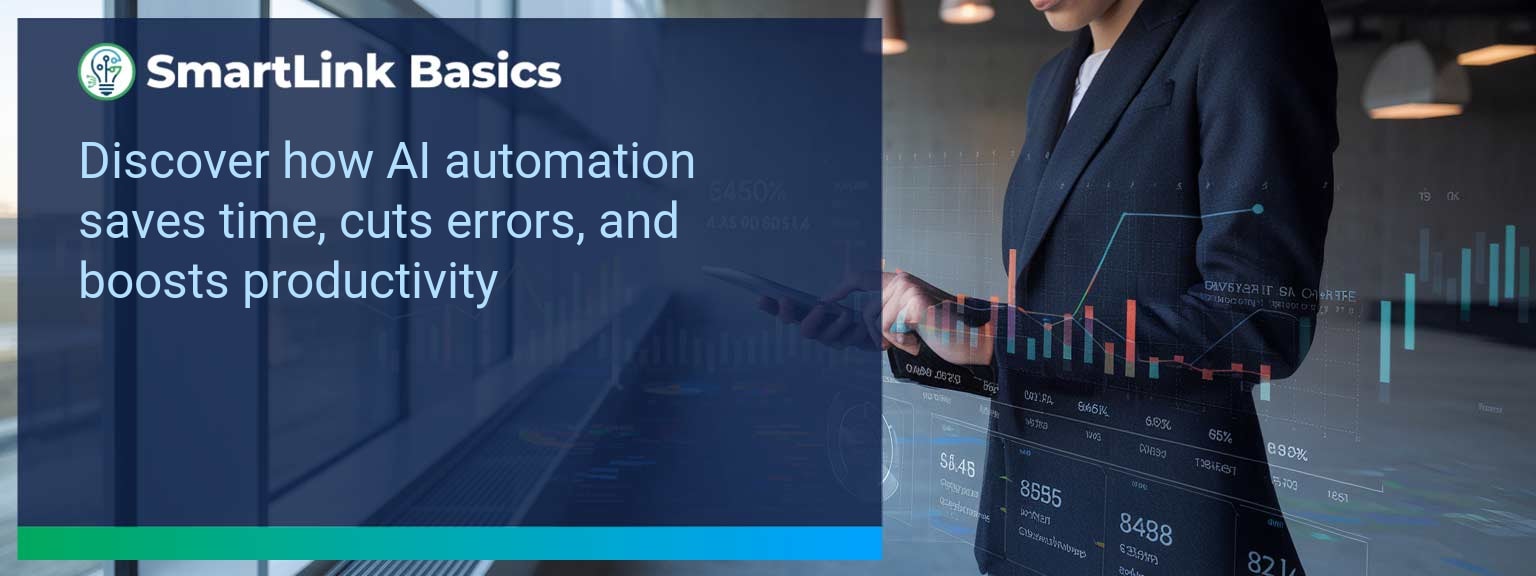A McKinsey study found that up to 60% of occupations could automate at least one-third of their activities using available technology. For sales leaders managing high-growth teams, this is more than a statistic—it’s a competitive advantage waiting to be captured. At SmartLink Basics, we see automating tasks with AI as a direct route to faster cycles, sharper priorities, and reduced operational drag.
This article outlines the operational challenges of manual workflows, how AI can streamline processes, the measurable benefits of AI adoption, and what’s coming next in AI-enabled execution. Expect practical frameworks you can apply immediately without overhauling your entire tech stack.
- Identify repetitive, rules-based tasks and apply AI automation tools.
- Re-engineer workflows to reduce human error and idle time.
- Leverage AI to optimize lead scoring, reporting, and follow-ups.
- Measure leading and lagging indicators to track AI output quality.
- Iterate by adding machine learning capabilities for predictive insights.
Common Obstacles In Manual Workflows
Manual sales processes often suffer from repetition, delayed reporting, and subjective decision-making. These inefficiencies not only slow deal velocity but also limit a leader’s ability to scale without adding disproportionate headcount. AI task automation replaces low-value administrative work with intelligent systems capable of working 24/7.
Consider a mid-market SaaS sales team where reps spend two hours daily logging activities and generating reports. Over a quarter, this costs hundreds of productive selling hours. AI can capture, interpret, and format this data in near real-time, removing latency from decision-making.
Eliminate bottlenecks by starting with workflows prone to delays—data entry, report compilation, and qualification steps. Prioritize processes where automation delivers immediate time savings and measurable revenue impact.
Leveraging AI To Automate Processes
Automating tasks with AI begins with mapping workflows as sequences of data inputs, decision points, and outputs. Once defined, machine learning tools and AI productivity platforms can execute these processes with precision.
For prospecting, AI can scrape and enrich leads, assign scores based on buying signals, and trigger outreach when intent is high. In post-sale account management, AI-powered systems can monitor usage patterns and proactively flag churn risk.
Case example: A B2B services firm integrated AI into its CRM to auto-generate opportunity summaries before weekly pipeline reviews. The result—reviews shortened by 30%, allowing managers to repurpose the saved time for coaching.
Start by piloting automation in one customer segment to validate gains before scaling.
Tangible Benefits Of AI Automation
The measurable gains from automation extend beyond speed. AI efficiency reduces error rates, enables consistent messaging, and improves forecasting accuracy. By freeing staff from repetitive tasks, organizations can align their capacity with high-value customer interactions.
An inside sales team using AI workflow automation reduced lead response times from 18 hours to under 5 minutes, increasing conversion by 22%. Predictive lead scoring also improved prioritization, cutting time wasted on low-probability deals.
Quantify automation’s impact with metrics tied to pipeline velocity, conversion rates, and quality of execution. This creates a clear ROI narrative for stakeholders.
| Category | Metric | Definition | Target |
|---|---|---|---|
| Leading | Lead Response Time | Time from inbound inquiry to first contact | Under 10 minutes |
| Lagging | Opportunity Win Rate | Closed-won deals as a percentage of total opportunities | +10% increase over baseline |
| Quality | Data Accuracy | Percentage of CRM records without errors or gaps | 98%+ |
Emerging Innovations In AI
Artificial intelligence automation is evolving toward deeper integration with predictive analytics and real-time decision engines. AI tools are beginning to not only perform tasks but also recommend strategic pivots based on live market or account data.
For example, next-generation AI productivity tools can analyze conversational cues in sales calls and suggest immediate adjustments to messaging while the call is in progress. This shifts AI from a support system to an active participant in sales execution.
Stay competitive by evaluating emerging AI capabilities quarterly and adding those with proven performance gains into your operational playbook. Access AI-driven sales enablement resources from SmartLink Basics for structured evaluation checklists.
Get the 90-day plan, coaching rubric, and dashboard template to operationalize AI in your enablement program.
Driving Sales Productivity Through AI Automation
AI-driven automation transforms sales teams by eliminating waste, sharpening focus, and increasing decision speed. In this post, we explored obstacles in manual workflows, ways to integrate AI effectively, measurable results, and innovations on the horizon. The next competitive advantage will belong to leaders who act quickly, embed AI into their operating rhythm, and measure the results relentlessly. Start by implementing one targeted automation using the AI-driven sales enablement resources from SmartLink Basics.









